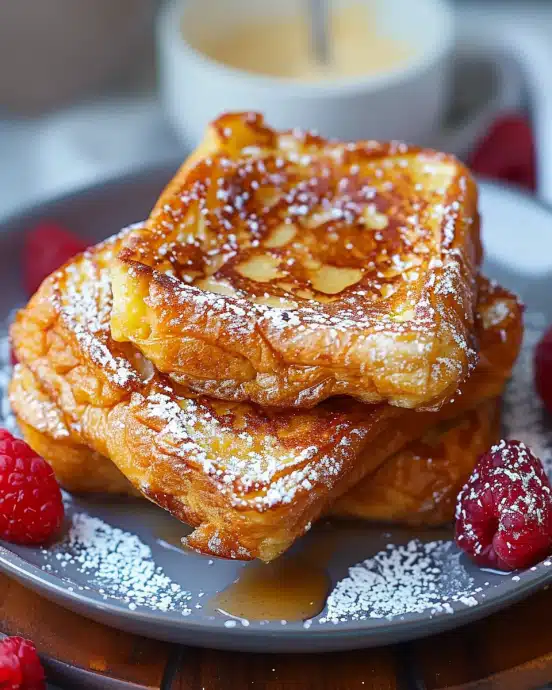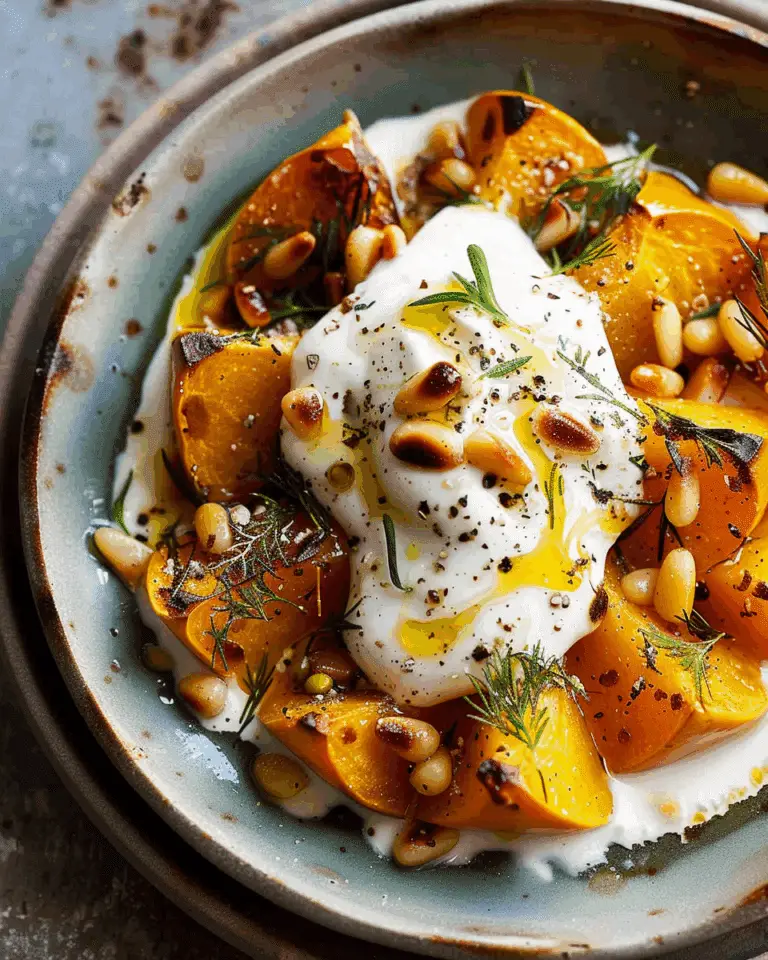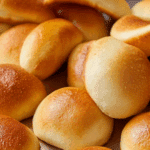If you’ve ever bitten into a soft, buttery roll that practically melts in your mouth, then you’re going to absolutely love this Parker House Rolls Recipe. These classic rolls are fluffy, rich, and have just the right amount of golden crisp on the outside, making them an irresistible side for everything from holiday dinners to casual weeknight meals. Once you make these, you’ll find yourself reaching for them again and again because nothing quite matches the comforting warmth and tenderness of perfectly made Parker House rolls.
Ingredients You’ll Need
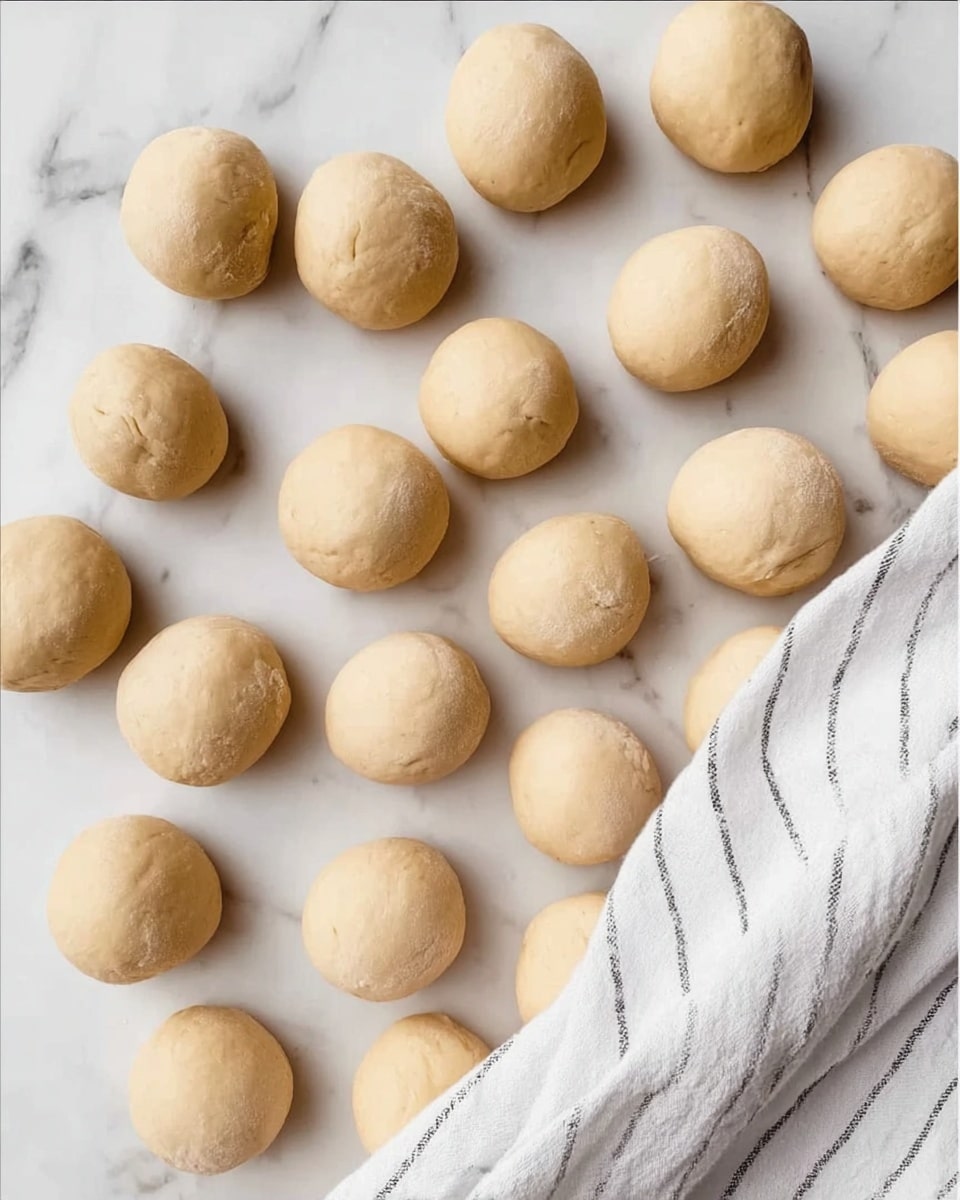
The magic behind this Parker House Rolls Recipe lies in a handful of simple ingredients that work together beautifully. Each one plays an essential role, delivering softness, flavor, and that dreamy golden crust we all crave.
- Whole milk: Adds moisture and richness to the dough for tender rolls.
- Dry active yeast: The secret agent that makes the dough rise and become airy.
- All-purpose flour: Provides the structure and chew that make these rolls so satisfying.
- Granulated sugar: Balances the savory with a slight sweetness, enhancing browning.
- Unsalted butter (softened): Brings softness into the dough and a rich buttery flavor.
- Kosher salt: Elevates all the flavors without overpowering.
- Unsalted butter (melted, for finishing): Gives the rolls that beautiful sheen and added buttery taste when brushed on warm.
- Sea salt or fleur de sel: Sprinkled on top for a delicate crunch and a hint of salty contrast.
How to Make Parker House Rolls Recipe
Step 1: Activate the yeast
Start by gently warming half of your whole milk to about 100°F — it should feel warm, not hot or it will kill the yeast. Combine this milk with the dry active yeast right in your stand mixer bowl and whisk it up. Let it sit for about 10 minutes until it becomes nice and foamy; this signals your yeast is alive and ready to make magic happen.
Step 2: Mix the dough
Once your yeast mixture is bubbly and inviting, add in the remaining milk, all-purpose flour, sugar, softened butter, and kosher salt. Use the paddle attachment on your stand mixer to gently bring the ingredients together on low speed, getting everything just combined without overworking yet.
Step 3: Knead to perfection
Switch your mixer to the hook attachment and knead the dough for about 5 to 7 minutes on medium-low speed. This careful kneading encourages gluten development, leaving you with a smooth, elastic dough that’s soft to touch but holds its shape beautifully.
Step 4: First rise or proof
Lightly oil a large bowl and place your dough inside. Cover it with plastic wrap or a clean towel, then tuck it in a warm spot for roughly one hour. You’re looking for the dough to double in size — when it’s puffed and airy, you’re ready to move on.
Step 5: Portion and rest
Turn your risen dough onto a clean surface and divide it into 24 equal pieces, each about 47 grams. Roll each into smooth rounds and spread them on the work surface, loosely covering with plastic wrap or a towel. Giving these little dough balls a rest for 5–10 minutes allows the gluten to relax, making shaping easier and more satisfying.
Step 6: Shape your rolls
Now the fun begins! Roll each portion into a round, then shape into ropes and tie in simple knots or flatten them, brush generously with melted butter, and fold in half. This is your classic Parker House fold. Arrange them neatly on parchment-lined baking sheets, ready for their final transformation.
Step 7: Traditional shaping option
If you’re craving the classic Parker House roll look and texture, lightly flour your surface and gently press each rested dough ball into an oblong shape about a quarter-inch thick. Brush melted butter over half the dough, then fold the unbuttered half over like a soft taco. Place on a parchment-lined baking sheet. These might proof a little faster than the round knots, so keep an eye on them.
Step 8: Final proofing
Let your shaped rolls rest one last time under a cover, at room temperature, for about 40 minutes or until they look puffed and airy. This is their moment to come alive, airy enough to rise beautifully during baking.
Step 9: Bake to golden perfection
Preheat your oven to 375°F and bake these beauties for 15 to 20 minutes. When they’re golden brown on top and smell like a warm buttery hug, they’re done and ready to be enjoyed.
Step 10: The finishing touch
As soon as the rolls come out of the oven, brush them lightly with melted butter and sprinkle with sea salt or fleur de sel for a delicious, slightly crisp and savory crust contrast. This finishing step takes your Parker House Rolls Recipe from great to absolutely unforgettable.
How to Serve Parker House Rolls Recipe
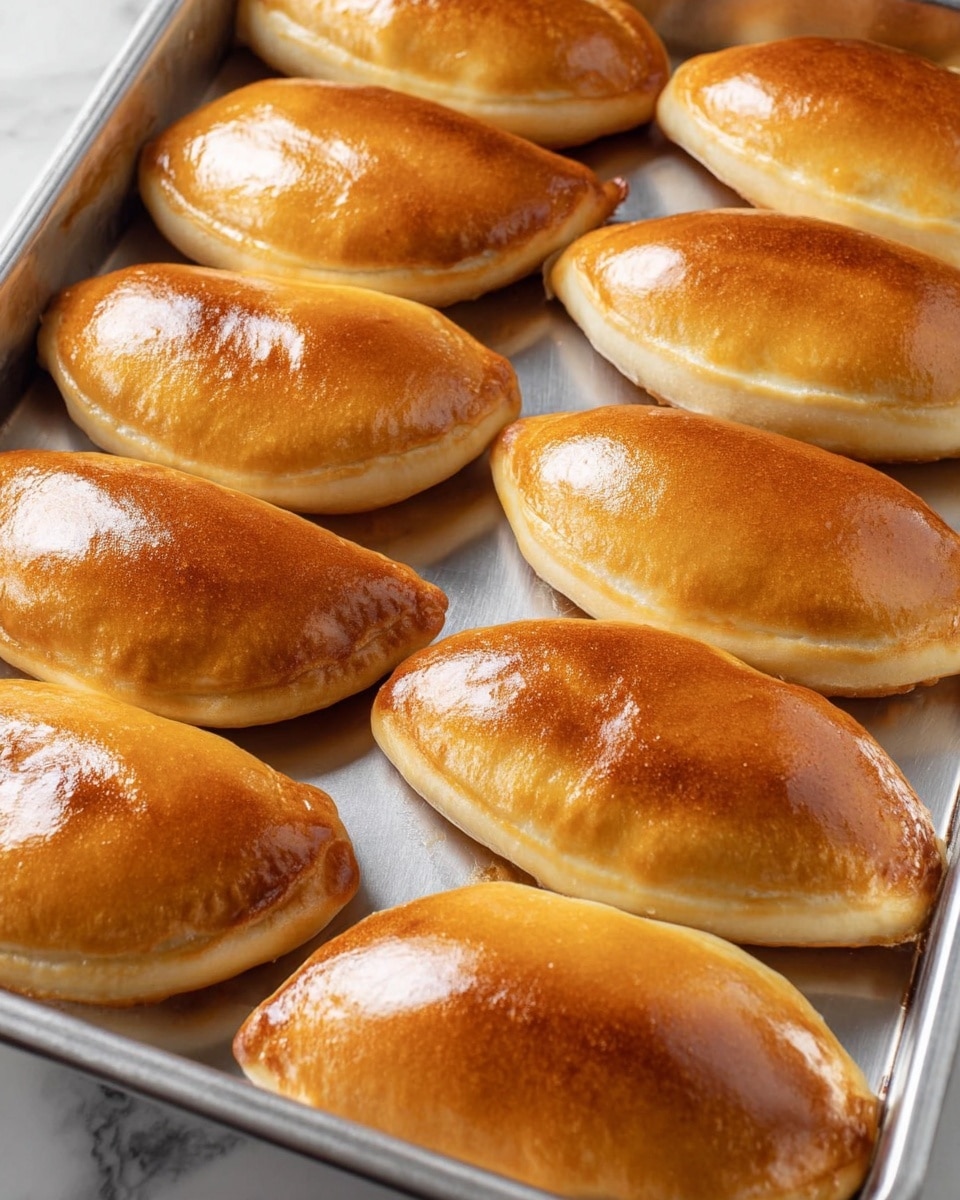
Garnishes
These rolls shine on their own with that buttery finish and sea salt pop, but if you want to get fancy, try topping them with fresh herbs like rosemary or thyme right after baking. A small dab of herb-infused butter or even a drizzle of honey butter is a delightful way to dress them up for guests or special occasions.
Side Dishes
Parker House rolls are incredibly versatile. They pair beautifully with hearty soups like chicken noodle or creamy tomato bisque, and they’re the perfect companion for Thanksgiving turkey, roasted vegetables, or even a simple reheated stew. Their buttery softness soaks up sauces and gravies like a dream.
Creative Ways to Present
Want to impress? Serve your Parker House rolls in a rustic basket lined with a cozy cloth napkin or arrange them in a circular pattern on a cutting board for a communal, inviting touch. For brunch, split and stuff with scrambled eggs and cheese or mini sliders for a creative twist everyone will love.
Make Ahead and Storage
Storing Leftovers
Leftover rolls can be stored in an airtight container or resealable bag at room temperature for up to 3 days. Keep them wrapped up well, and they’ll stay soft and buttery, just like freshly baked.
Freezing
To freeze, wrap individual rolls tightly in plastic wrap, then tuck them into a freezer-safe bag or container. They can be kept frozen for up to 3 months. When you want a quick treat, thaw them overnight in the fridge or at room temperature for a few hours.
Reheating
Warm your rolls by popping them in a preheated oven at 300°F for 5 to 10 minutes, which refreshes their softness and brings back that freshly baked warmth. For a quick fix, cover with a damp paper towel and microwave in 15-second increments until warm.
FAQs
Can I use instant yeast instead of active dry yeast?
Yes, you can substitute instant yeast for dry active yeast in the Parker House Rolls Recipe. Use about 25% less than the amount called, and add it directly to the dry ingredients without proofing in milk.
Why are my rolls dense instead of fluffy?
Dense rolls typically mean either the dough wasn’t kneaded enough, or the yeast wasn’t properly activated. Make sure your yeast is foamy before mixing, and knead the dough until smooth and elastic to encourage that perfect airy texture.
Can I make Parker House rolls without a stand mixer?
Absolutely! You can mix and knead this dough by hand. It might take a bit more elbow grease, but just knead for about 10 to 12 minutes until the dough becomes smooth and elastic.
What’s the best way to shape the rolls?
Both the traditional folded oval method and knotted rounds work wonderfully. The folded method creates a slightly softer pull-apart texture, while the knots offer a fun, rustic look. Feel free to experiment to find your favorite!
How important is resting the dough before shaping?
Resting the dough allows the gluten to relax, making the dough easier to shape and preventing it from springing back. Skipping this step can make rolling and folding much more difficult and impact the final softness.
Final Thoughts
There’s truly nothing quite like homemade Parker House rolls to turn a simple meal into something special. Embrace the process, enjoy the aroma filling your kitchen, and share these warm, buttery rolls with friends and family. Once you try this Parker House Rolls Recipe, they’ll quickly become a beloved staple you’ll want to make over and over again.
PrintParker House Rolls Recipe
This Parker House Rolls recipe yields soft, buttery, and slightly sweet rolls with a signature folded shape and tender crumb. Perfect for holiday dinners, family meals, or any occasion that calls for rich, homemade bread rolls with a golden crust and tender inside.
- Prep Time: 25 minutes
- Cook Time: 20 minutes
- Total Time: 1 hour 25 minutes
- Yield: 24 rolls
- Category: Bread
- Method: Baking
- Cuisine: American
Ingredients
Wet Ingredients
- 1 1/3 cups whole milk, warmed to approximately 100°F
- ½ cup unsalted butter, softened
- ¼ cup unsalted butter, melted (for finishing and brushing)
Dry Ingredients
- 4 ½ teaspoons active dry yeast (2 packets)
- 5 cups all-purpose flour
- 2 tablespoons granulated sugar
- 1 tablespoon kosher salt
- 1 tablespoon sea salt or fleur de sel (for finishing)
Instructions
- Activate the Yeast: In the bowl of a stand mixer, combine the active dry yeast with half of the warmed milk (about 100°F). Whisk lightly to distribute the yeast evenly, then let it sit undisturbed for about 10 minutes until it becomes foamy, indicating the yeast is active.
- Combine Ingredients: Add the remaining milk, all-purpose flour, granulated sugar, softened butter, and kosher salt to the same bowl with the foamy yeast mixture. Fit your stand mixer with the paddle attachment and mix on low speed until the ingredients start to come together.
- Knead the Dough: Switch to the hook attachment and knead the dough on medium-low speed for 5 to 7 minutes until it forms a smooth and elastic dough. This develops the gluten needed for a soft texture.
- First Proofing: Turn the dough out into an oiled or sprayed bowl. Cover it tightly and place it in a warm spot to proof for about 1 hour, or until the dough doubles in size.
- Divide and Rest: Transfer the proofed dough to a clean work surface. Divide it into 24 equal pieces, approximately 47 grams each. Roll each piece into a round ball, place on the bench, and cover with plastic wrap or a clean towel to rest and relax for 5 to 10 minutes.
- Shape the Rolls: For the Parker House rolls, roll each rested dough ball into a rope and tie it into a knot or flatten into an oval shape. Brush each piece with melted butter and fold in half, placing them on parchment-lined baking sheets.
- Alternative Traditional Shape: On a lightly floured surface, roll or press the dough into an oblong oval about ¼ inch thick. Brush melted butter on half of the oval, fold the unbuttered side over the buttered side like a taco, and place on a parchment-lined baking sheet.
- Final Proof: Let the shaped rolls proof for about 40 minutes until they become light and airy. Note that traditional folded rolls might proof faster than the knotted round ones.
- Preheat the Oven: Preheat your oven to 375°F (190°C) to prepare for baking.
- Bake: Bake the rolls in the preheated oven for 15 to 20 minutes or until they turn golden brown and sound hollow when tapped.
- Finish: When the rolls are warm out of the oven, lightly brush them with additional melted butter and sprinkle with sea salt or fleur de sel if desired. Serve warm for the best taste and texture.
Notes
- Make sure the milk is warmed to about 100°F to properly activate the yeast without killing it.
- If you don’t have a stand mixer, you can knead the dough by hand for about 10-12 minutes until it is smooth and elastic.
- Use parchment paper to prevent the rolls from sticking and for easy cleanup.
- For extra flavor, sprinkle flaky sea salt on top just before baking or immediately after brushing with melted butter.
- These rolls freeze well. Cool completely, then freeze in airtight containers. Reheat gently before serving.



